On the evening of Wednesday, November 9, the School of Creativity and Art once again joined hands with ShanghaiTech Colleges to invite Professor Shouzhi Wang to present the second lecture of the Classical Music Appreciation Series - Baroque Art and Mozart. The event was still well received, attracting nearly 200 people to register.
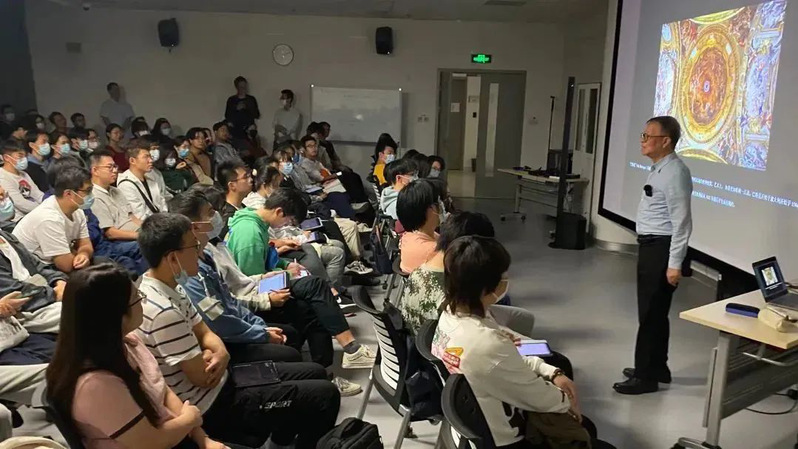
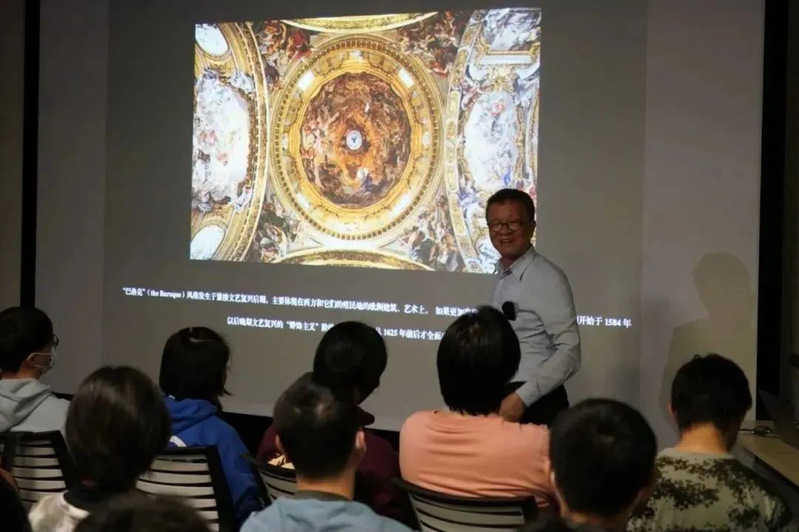
Baroque as an art style began in Italy in 1584, and has had a profound influence not only on music, but also on the aesthetic concept of architecture and painting. The word "baroque" originally means "irregularly shaped pearls", and it is used to describe an artistic style that is completely different from the classical form. The term overdecoration is a summary of this style, but the beauty of overdecoration is always clever and varied, especially suitable for showing the beauty of architecture, so that people never get tired of looking at it.
Professor Wang also talked about the late development of the Baroque and the emergence of the equally gorgeous Rococo style, which is more majestic and magnificent than the Baroque and more feminine than the Rococo.
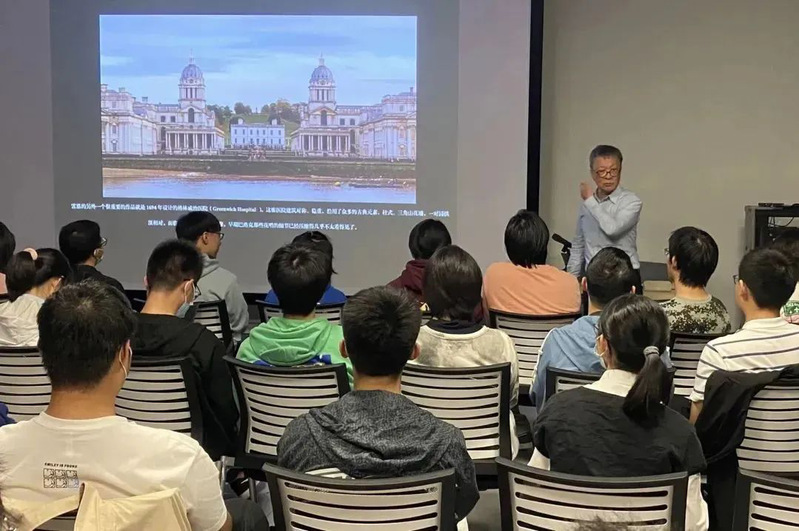
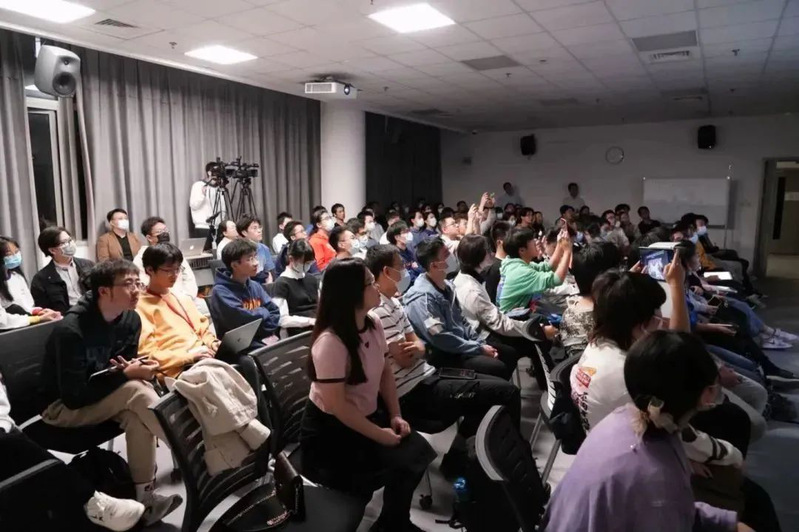
Professor Wang selected a large number of representative photos of Baroque style architecture. The high-definition pictures made it easy for the students to clearly appreciate this artistic style, and every time the slideshow was switched, the students were quick to raise their lenses and take the beautiful pictures to enjoy them later. Professor Wang also shared some stories about his own visits to these buildings from time to time.

The prevalence of Baroque art is also related to the strong religious factor behind it, therefore, when mentioning the most important architectural style of this kind, it is necessary to mention St. Peter's Basilica. As the iconic building of the Vatican, St. Peter's Basilica borrows the Baroque architecture and paintings to show the sense of religious sanctity and sublimity. Looking at the frescoes painted by Michelangelo's hand for the church dome and listening to Professor Wang's explanation, students and teachers were struck not only by the visual shock of the flat frescoes being painted in three dimensions, but also by the talent of Michelangelo's painters who, more than 700 years later, still managed to conquer a group of later generations by breaking through the boundaries of time and frames.
As the saying goes, the insider sees the doorway, the outsider sees the hilarity. Professor Wang Shouzhi's humorous and precise explanation made the process of understanding Baroque culture more concise and clear, and the audience picked up their cell phones from time to time to take pictures of the more touching details, and bowed their heads from time to time to record their insights and understanding.
Then came the main event of the lecture - Mozart. Many of Mozart's works are familiar to everyone. In his short 35 years, Mozart concentrated on a large number of compositions efficiently, not only inheriting the skillful creative abilities of his predecessors such as Bach and Haydn, but also changing on the basis of his predecessors, wilfully wielding his talent and achieving world-famous achievements. At the same time, Prof. Wang also combined Mozart's 35 years of ups and downs with his musical works to explain the ups and downs of the audience's mind, and everyone listened with great interest.
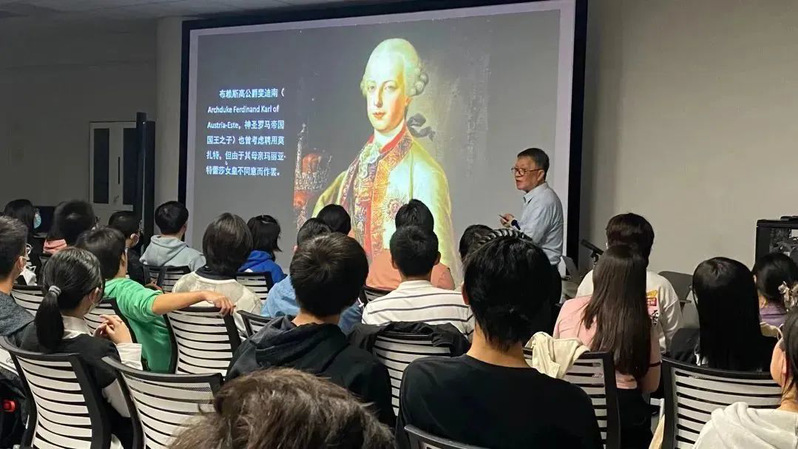
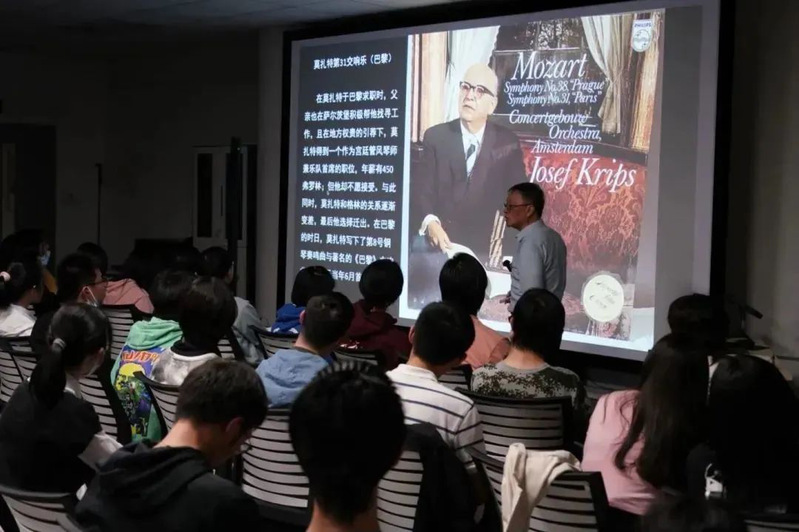
At the end of the lecture, Prof. Wang shared a C major sonata K545 with us and shared knowledge about fugue, and the lecture ended with the beautiful sound of the piano.
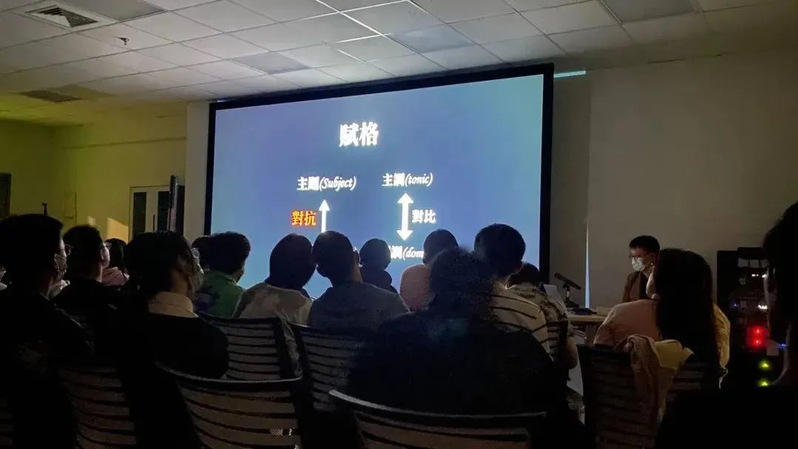
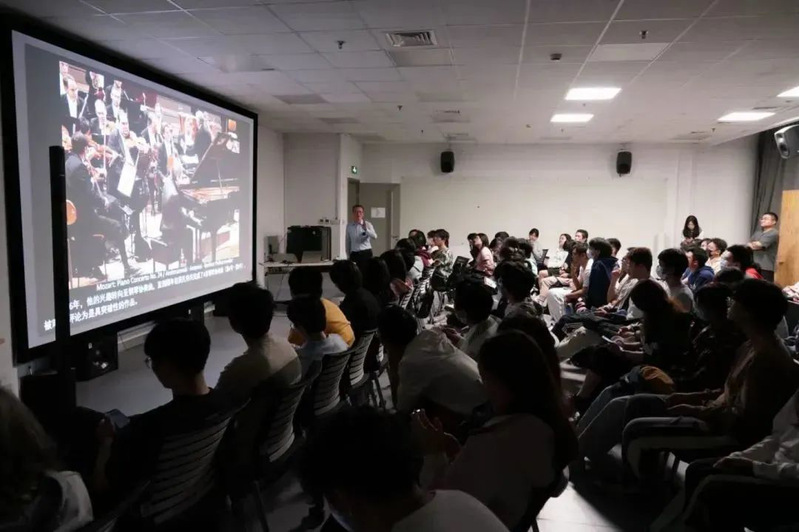
Classical music not only improves students' appreciation of classical art, but also cultivates their sentiments and gives a moment of quiet time to feel where the charm of art lies.


